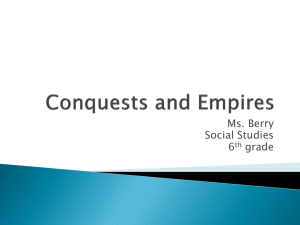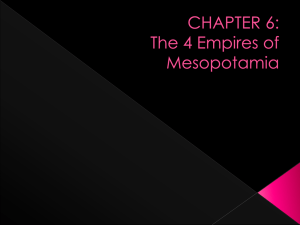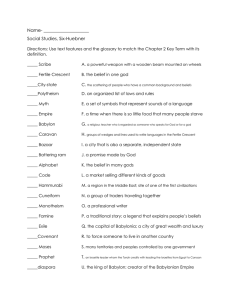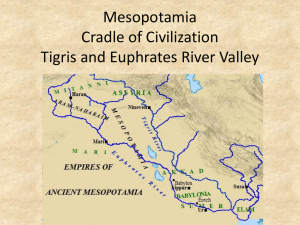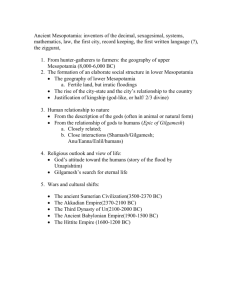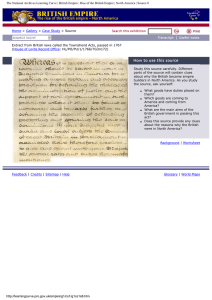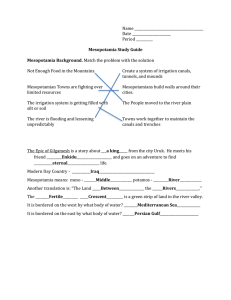Ancient Mesopotamia
advertisement
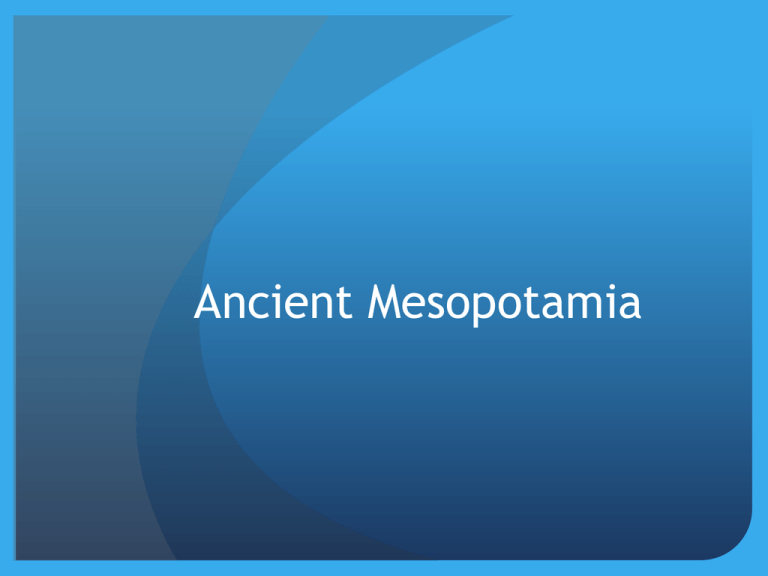
Ancient Mesopotamia Cornell Note Taking Cornell Note Taking Gilgamesh The King Supreme over other kings, lordly in appearance, he is the hero. He walks out in front, the leader, and walks at the rear, trusted by his companions. Mighty net, protector of his people, raging flood wave who destroys even walls of stone! Two thirds of him is god, one third of him is human. Gilgamesh befriends a wild man, Enkidu, and goes on a journey seeking eternal life. Aspects of a Civilization 1. Stable Food Supply Farming is required More food supports larger populations Invention: The Plow Modern Examples: Farms Stores 2. Social Structure Different jobs and social levels Your status affects your quality of life Slavery appears in the lowest classes Modern Examples: Upper Class Family Roles 3. Government Makes life orderly Protects and guides the people Creates and enforces laws Modern Examples: Democracy King/Queen 4. Religion/Philosophy A set of beliefs A common way of life Values Modern Examples: Buddhism Human Rights 5. Developed Culture Art forms such as music, art, architecture, & literature Proof of advanced thinking strategies Modern Examples: Picasso Beatles 6. Technology Practical tools and inventions Creations to make life easier Wheel created in 3500 B.C.E. Modern Examples: Internet Car 7. Writing Created from a more basic form: Pictographs Detailed written language Used to record information about society Modern Examples: Phonetic Alphabet Character Writing Mesopotamia • • • • Modern day Iraq Meso (Greek) = middle Potamos (Greek) = river “The land between the rivers” Fertile Crescent • Green Strip of Land • From Persian Gulf to Mediterranean Sea • Rich soil good for farming • First cities appear here Akkadian Empire Years: 2300 B.C.E. – 2100 B.C.E. Main Ruler: Sargon First ever empire (multiple people groups ruled by one person) Strong army Broke down city walls Replaced leaders with loyal followers Required payment (tribute) Babylonian Empire Years: 1800 B.C.E. – 1500 B.C.E. Main Ruler: Hammurabi The Code of Hammurabi - one set of laws for everyone United under the god Marduk The Empire was well maintained Assyrian Empire Years: 911 B.C.E. – 612 B.C.E. Main Leader: Tiglath Pileser III The King obeyed the gods Treated conquered people harshly Aqueducts brought water to the city Large Empire from Egypt to the Persian Gulf The army was stretched out too thinly and was defeated Neo-Babylonian Empire Years: 605 B.C.E. – 562 B.C.E. Main Leader: Nebuchadnezzar II Capital: Babylon Built 2 walls (an outer and inner wall) Created the sundial Built the hanging gardens of Babylon
